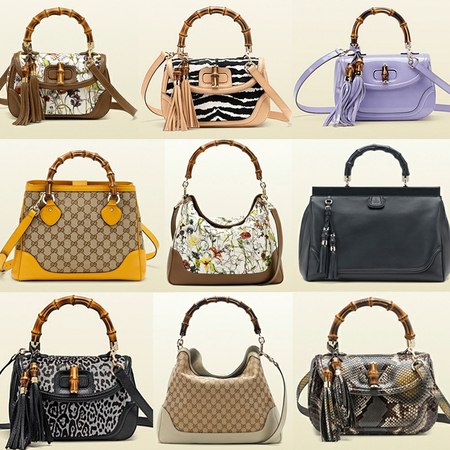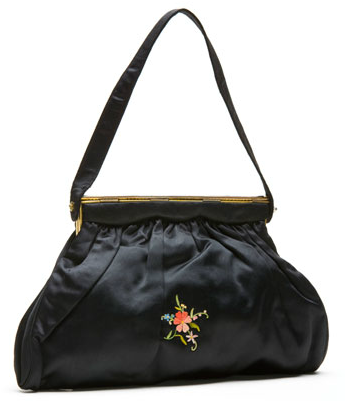 Unlike some of the other topics we’ve covered in the “brief history of…” series, the modern handbag comes from extremely ambiguous origins. Humans have been using bags and pouches to carry items since long before the written word was invented, and they’ve sprung up in similar fashions all around the world.
Unlike some of the other topics we’ve covered in the “brief history of…” series, the modern handbag comes from extremely ambiguous origins. Humans have been using bags and pouches to carry items since long before the written word was invented, and they’ve sprung up in similar fashions all around the world.
Pre-19th century handbag history
Bags have been carried since time immemorial, but we have pretty solid evidence to support at least some of their appearances. Back in Ancient Egypt, men tied pouches to their waists in order to transport items (as depicted in artwork from the era); in early rural societies, peasants used little bags to transport seeds; and priests in Africa carried beaded bags with them from location to location.
In the 14th century, drawstring bags were attached to the waist in order to carry money (predating the clothing pocket by hundreds of years), and women carried ornate versions of these bags, referred to as “hamondeys” or “tasques.” Even in the 1300s, men and ladies judged strangers by the quality of their handbag: the more adornment, the more prestige.
Moving into the 15th century, embroidered pouches were often given from grooms to brides as a wedding gift, ecclesiastical purses came to significance holding relics, and “chaneries” were used by knights to carry food for falcons (as sport hunting became extremely popular among the upper classes in Europe).
But then, in the 16th century, purses quite literally disappeared from view: ladies’ skirts expanded and petticoats were layered with extreme prejudice, and women began hiding their purses beneath their many, many layers.
Men’s dressing, too, became more and more ornate, and they started hiding their pouches in their pants: a hilarious approach to pseudo-pockets, wherein leather “bagges” were simply worn inside of their breeches. And, as peasants began simply slinging their cloth bags across their bodies (the peasants knew where it was at), the upper class men and women hiding their bags beneath their clothing added “swete bags” to their repertoire: sweet smelling bags of what was essentially body potpourri, carried and concealed in order to compensate for the smells associated with refusing to bathe for weeks on end.
In the 17th and 18th centuries, skirts slimmed down again, and pouches in turn began to get more and more ornate, with no room left under one’s six petticoats to hide a bag. The English began calling handbag-type purses “indispensables,” and they began to be carried again as accessories rather than hidden, functional objects.
If you want to recapture ancient times using a modern bag that has a satchel-y feel, try the United Colors of Benetton Snyder Crossbody Bag.
Amazing tales from the 19th century

As with most industries, the 19th century came with some pretty big changes in the handbag world. The Victorian era brought more fabrics and production methods than ever before. Women began wearing decorative belt hooks around their waists from which they could suspend bags from by chains, and when the railroad was invented it lead to a need for not just handbags but hand-held luggage, too. Luggage-makers who used to focus on horse-travellers moved to the train industry while dressmakers and marriageable women continued to make women’s purses, and significant amounts of detail were added to each.
The 20th century
With the 1900s came the era of the modern handbag, made originally from leather and intended to be worn from the shoulder. In the first few decades of the 20th century, men carried leather briefcases (with folders inside for the new British pound notes), and women carried everything from “Dorothy bags” (small drawstring pouches) to “pochettes,” which were small clutches for young women.

After the WWI, however, “pochettes” began being carried by all, and handbags on the whole were no longer required to perfectly match an outfit. This is when bags really took a recognizable turn — like women of today, the ladies in the 1920s could finally have one bag that they really loved & carry it ceaselessly, and if I had to choose a handbag that evokes the look of the 20’s, I’d pick the Raisa By Heys Sorrento East/West Clutch.
Fast forward not too far in the future to the 1930s, and the shoulder bag, the satchel, the clasp bag, and the modern clutch made it to the fashion world. Handbag makers were hugely influenced by the Art Deco movement, and they used a lot of plastic, zippers, and other industrial materials. Some of them looked a lot like the Heys Nottingham East/West Doctor’s Bag.

In the ‘40s, larger, more utilitarian-looking bags came into style with the war, and leather fell out of favour as it was re-directed to the army. Handbags reached iconic status in the ‘50s as major design houses came into play (Chanel, Louis Vuitton, and Hermes), and in the ‘60s, straps got longer as clutches got skinnier. The United Colors of Benetton Aiyana Hobo Bag is a great example of a bag from this time period.

Patchwork bags, embroidery, and psychedelic bags came back into style in the ‘70s, and in the ‘80s, sports bags and backpacks really took off.
The most famous purse in the world today…
Is without a doubt the Hermès Birkin bag. Named after actress and singer Jane Birkin, this iconic bag comes in a range of materials including ostrich, crocodile, and lizard skin, is lined with goat skin, and arrives with a customized lock and key. (If you’ve ever owned a bag with a key looped around the handle, this is the bag that really started that style!)
For those not willing to wait six years on the wait list for a Birkin bag (and those unwilling to part with $10 000-$200 000 USD for one), shop Best Buy’s selection of totes to find your perfect match, instead.


